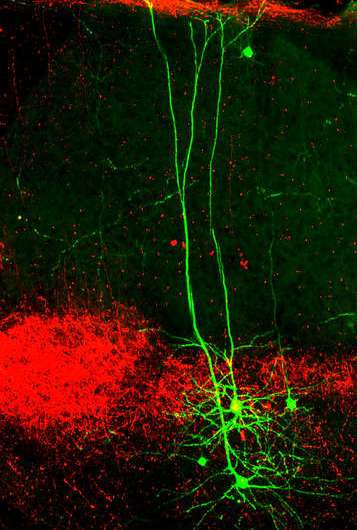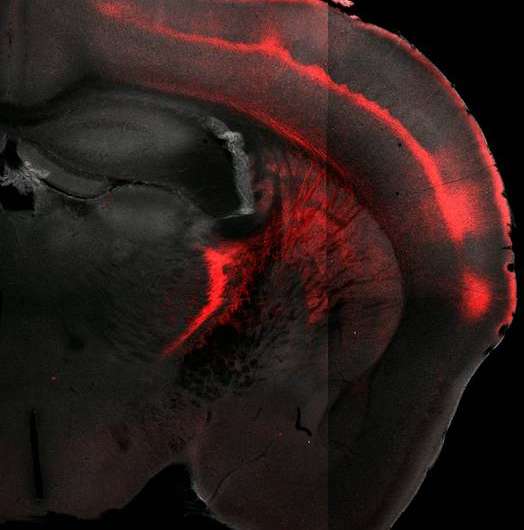Important brain network for processing sensory perceptions elucidated

Every day, we constantly absorb information through our sensory organs, which the brain then needs to process correctly. The information initially reaches the main relay center, the thalamus, and then travels to the cerebral cortex. The neurons in the so-called higher-order thalamus form the connecting lines between both areas of the brain. Prior to this, their role in sensory processing was unknown. Scientists at the Technical University of Munich (TUM) have now shown for the first time in an animal model that they enhance and temporarily store sensory information.
The thalamus is essentially the size of two walnuts and is located in the middle of the brain. All sensory perceptions converge here first. As the main relay center, it therefore needs to reconcile the flood of incoming information and the brain's limited computing power. But how does the thalamus do this? How does it signal to the cortex within milliseconds which information is important and needs to be evaluated there and brought to the conscious mind?
Animal model for researching sensory stimuli
The processes in the neurons at the transition point between the thalamus and the cortex are particularly interesting for neuroscientists like Dr. Alexander Groh at the Institute of Neuroscience and the Department of Neurosurgery at TUM. "Very little is still known about the role and the effects of this region, described as the higher-order thalamus. It is, however, extremely important, as the neurons there develop contacts with numerous areas in the cortex and potentially affect these," explains Alexander Groh, who headed up the study.
Now, for the first time, the scientists can depict the neural activity in the sensory stimuli at this contact point in their experiments in the animal model. To do this, the researchers touched the whiskers of sleeping mice, at the same time measuring the processes in the neurons of the cortical target areas. "The mouse's whiskers are its most important sensory organ and the signals received by the whiskers are converted into sensations by the cortex. How the cells in the higher-order thalamus influence the sensory signals in the cortex has long been a subject of discussion," explains Dr. Rebecca Mease, who also worked on the study.

"Higher-order" thalamus enhances and stores signals
Groh and his team were able to show that the higher-order thalamus sends activating signals to the cortex. These were able to enhance cortical signals and maintain them even when the actual stimulus - touching the whiskers - no longer existed. "The higher-order thalamus apparently serves to amplify important signals and also to store them temporarily over a certain period. The brain can thus filter out important information in the thalamus and then forward this information in an amplified form and for a longer period of time to the cortex."
The sensory system is therefore extremely interesting for research purposes, as it is anatomically very similar in mice, apes and humans. Moreover, the information from the thalamus also affects behavior as the cortex contains important areas relating to movement. "It appears that nature has created a general-purpose information processing system here. It is very handy for us scientists because we can ferret out a lot of information in animal models, and there is a high probability that it will also apply to the human brain," says Groh.
More information: Rebecca A. Mease et al. Cortical Sensory Responses Are Enhanced by the Higher-Order Thalamus, Cell Reports (2016). DOI: 10.1016/j.celrep.2015.12.026


















